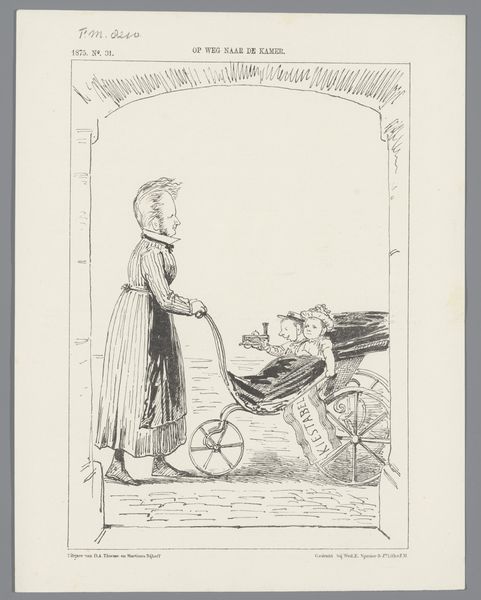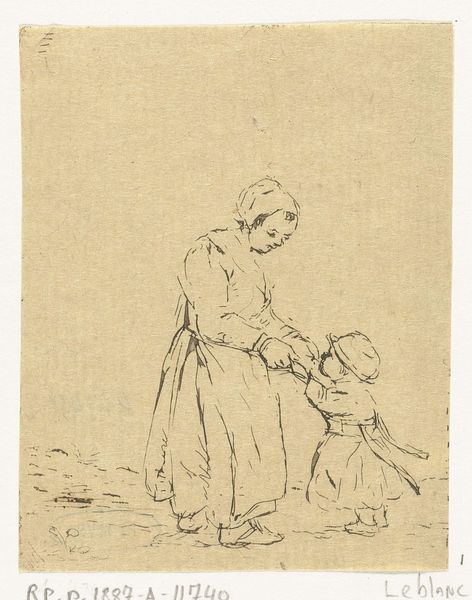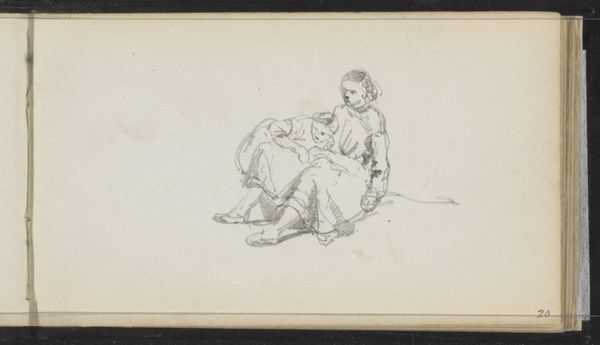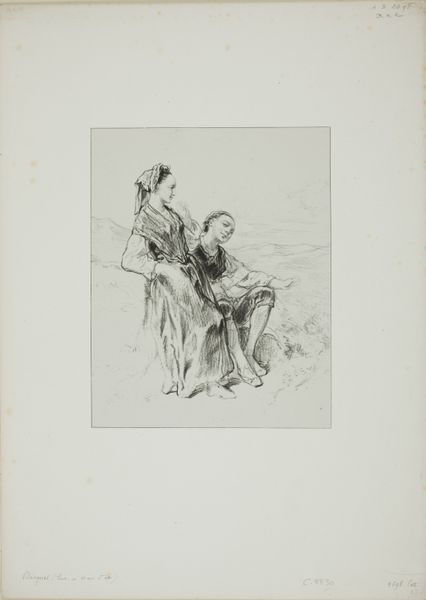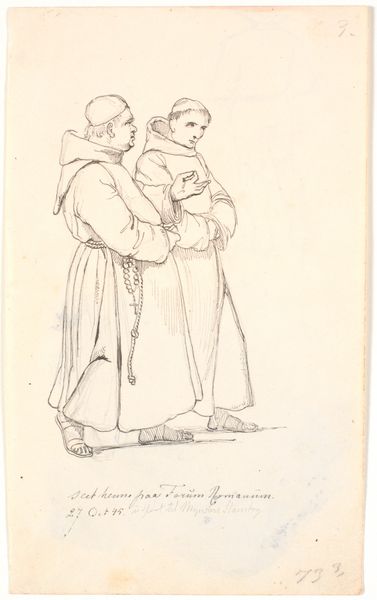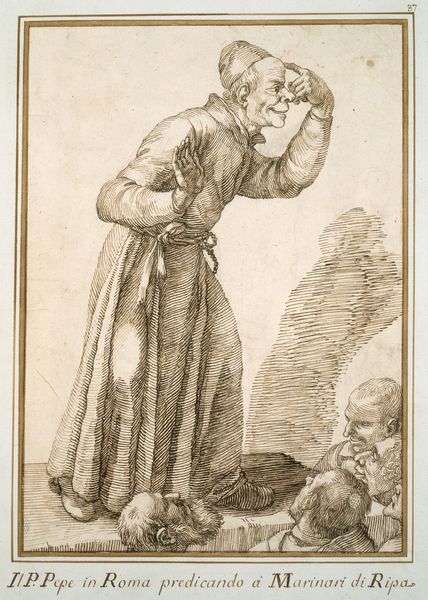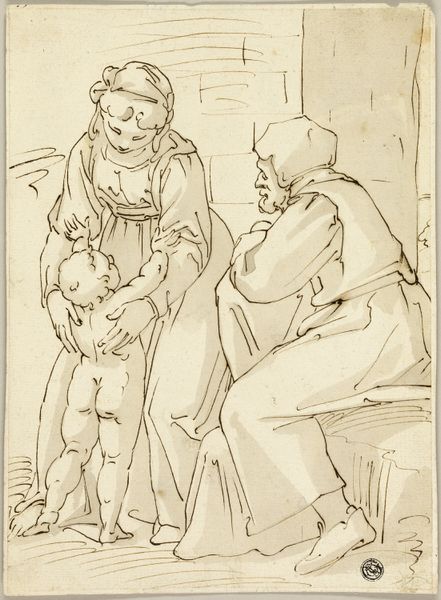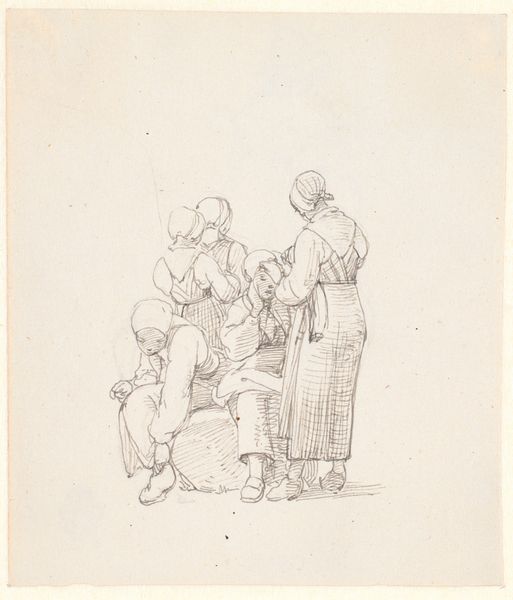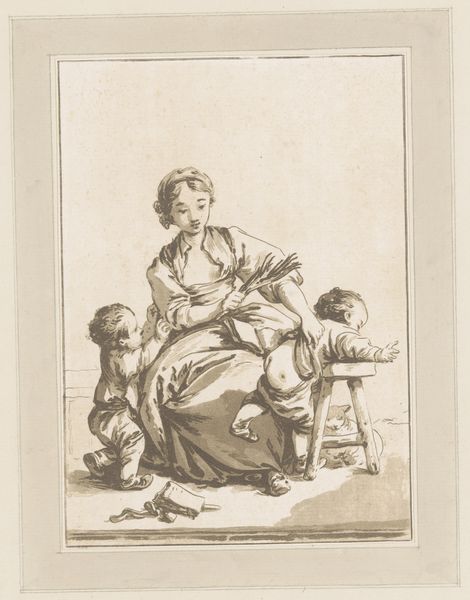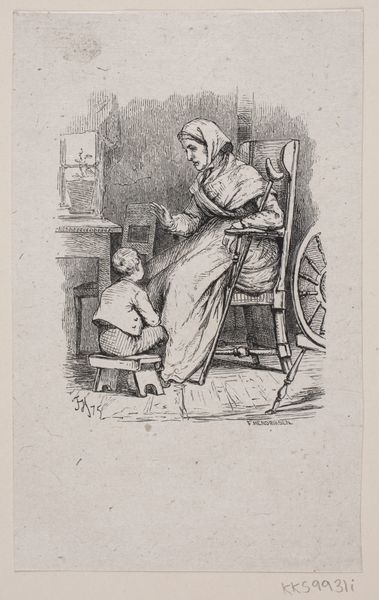
drawing, paper, watercolor, pencil
#
portrait
#
drawing
#
landscape
#
figuration
#
paper
#
watercolor
#
pencil
#
genre-painting
#
history-painting
#
early-renaissance
#
watercolor
#
realism
Dimensions: height 408 mm, width 277 mm
Copyright: Rijks Museum: Open Domain
Curator: Welcome. Let's explore "Maria met Christus en Johannes de Doper als kinderen," or "Mary with Christ and John the Baptist as children" created by Elisabeth Kemper in 1821. It is rendered in pencil and watercolor on paper. Editor: It exudes such a serene and melancholic mood. The delicate wash of color gives it a ghostly, dreamlike quality. Curator: The artist, Elisabeth Kemper, born into the Kemper family and unmarried, had more flexibility in her professional work at that time. Note the careful composition, and the lines establishing the spatial relationship of the figures to the shallow landscape. It establishes a narrative of kinship and future religious importance. Editor: Indeed. One can interpret the landscape setting as an allusion to the Holy Land, thereby universalizing the representation of maternal care as rooted in the specificity of its representation, Mary and Christ. Do you notice, the way that Mary clasps the child close to her is telling - this simple and quite common artistic act also speaks volumes about the status of children during this historical period. Curator: Formally, there's an emphasis on idealized forms rendered with restrained emotion that reminds me of early Renaissance figuration. The light softly contours the bodies, focusing our attention on the central group dynamic. Editor: But who gets to claim an "idealized form"? And what's not to say this artist wasn't resisting the strict, social protocols in place, perhaps attempting to capture figures that resonate with, and even resist the constraints and limitations, facing Dutch people? I'd even go as far as to say it highlights both the agency, and the vulnerability that comes with bearing witness to oppression, a shared sense of experience which links women during this time period. Curator: Certainly, the softness does lend itself to empathy. Considering the work as a constructed aesthetic object, I see the careful placement and orientation of the figures acting as structural fulcrums, dictating how the composition will visually behave. Editor: Thank you. In considering historical influences we begin to unlock the emotional narratives embedded within artistic portraits, while bringing them into the broader societal context they once were created. Curator: I appreciate that analysis. Ultimately, this watercolor beautifully captures not just a religious scene, but a carefully designed, affective grouping.
Comments
No comments
Be the first to comment and join the conversation on the ultimate creative platform.
